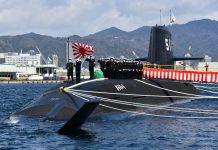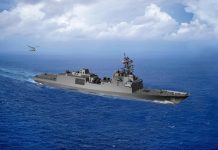Decades ago, seaplanes proved their might during World War I for surveillance and reconnaissance. Not just that, seaplanes were later utilized for attacking enemy vessels as the crew dropped bombs from them.
During World War II, aircraft carriers played a vital role with rapid deployment around the world, and seaplanes took a backseat.
“They have braved the glacier-bound coast of Alaska, the lava-strewn shores of the Galapagos; they have challenged the wind-swept Pacific Islands and the fog-bound Gulf of Alaska.
Thousands of miles of frowning coastline and of the open sea have been mirrored in their lower wing panels,” wrote US Navy Lieutenant Ralph R. Gurley about the PN-12-based platforms.
As the world moved away from seaplanes as military artillery, China developed one of the biggest seaplanes, the AG600 “Kunlong” (roughly translating to “fish dragon”).
It has four powerful WJ-6 turboprop engines and is 36.90 meters (121 feet) long and 12 meters high. With a wingspan of 38.80 meters, it can carry 50 passengers at a maximum speed of 500km/h (310 mph).
Designed by China’s state-owned company, Aviation Industry Corporation of China (AVIC), AG600 is a multi-role aircraft built for special civil operations like forest firefighting, marine rescue, or any other critical emergency rescue missions. It is also the first time that China’s aviation industry has developed a special-mission large civil aircraft model, noted Xinhuanet.
“Starting in 2009, the AG600 amphibious airplane project has been designed with the potential to have multiple variants, seeking to continuously meet various demands of customers,” AVIC told the news outlet.
Besides firefighting and water rescue missions, the report added that the AG600 aircraft can be modified or fitted with more facilities to meet customers’ special mission requirements, according to the AVIC.
The amphibious plane took its maiden flight in December 2017 from the Jinwan Civil Aviation Airport in the city of Zhuhai, south China’s Guangdong Province. It boasts long-range and long-haul capabilities that can efficiently shuttle between the fire site and water source, each time carrying as much as 12 tons and dropping water over an area of 4,000 square meters, XinhuaNet stated.
AVIC AG600 is designed to operate in complex weather and environmental conditions and can rescue up to 50 people on each mission. It is capable of “low altitude water surface search and anchor for water and maritime rescue missions”.
As the two global superpowers, the US and China, hotly contest the South China Sea, the development of an amphibious aircraft is a threat that has already been noted by military observers.
“The Marine Corps is just now getting back to its foundational purpose: Amphibious operations…and if the Corps hopes to be a deterrent in the Pacific region, we need to take this development seriously,” James Powell, a Marine veteran, and former CIA officer told Popular Mechanics.
“We need to at least study how capabilities associated with flying boats and seaplanes might hinder our amphibious operations in the region.”
According to the ‘Military and Security Developments Involving the People’s Republic of China 2020’ report submitted to Congress, the US Navy is already lagging behind the People’s Liberation Army Navy (PLAN), which is currently “the largest navy in the world.”
The report said that the People’s Republic of China (PRC) has “an overall battle force of approximately 350 ships and submarines including over 130 major surface combatants. In comparison, the U.S. Navy’s battle force is approximately 293 ships as of early 2020”.




